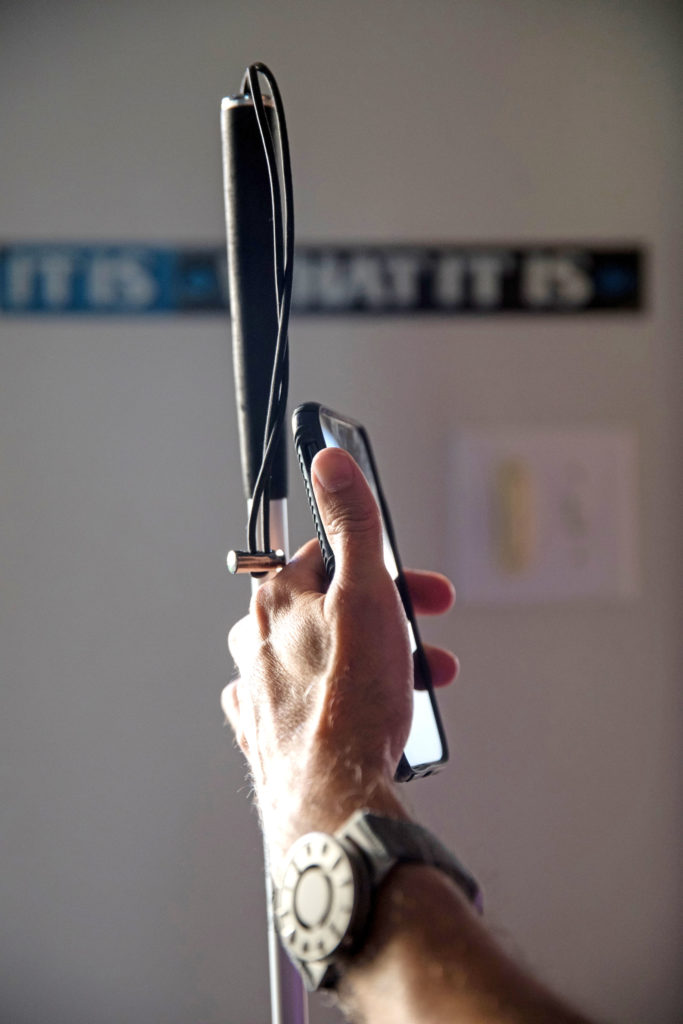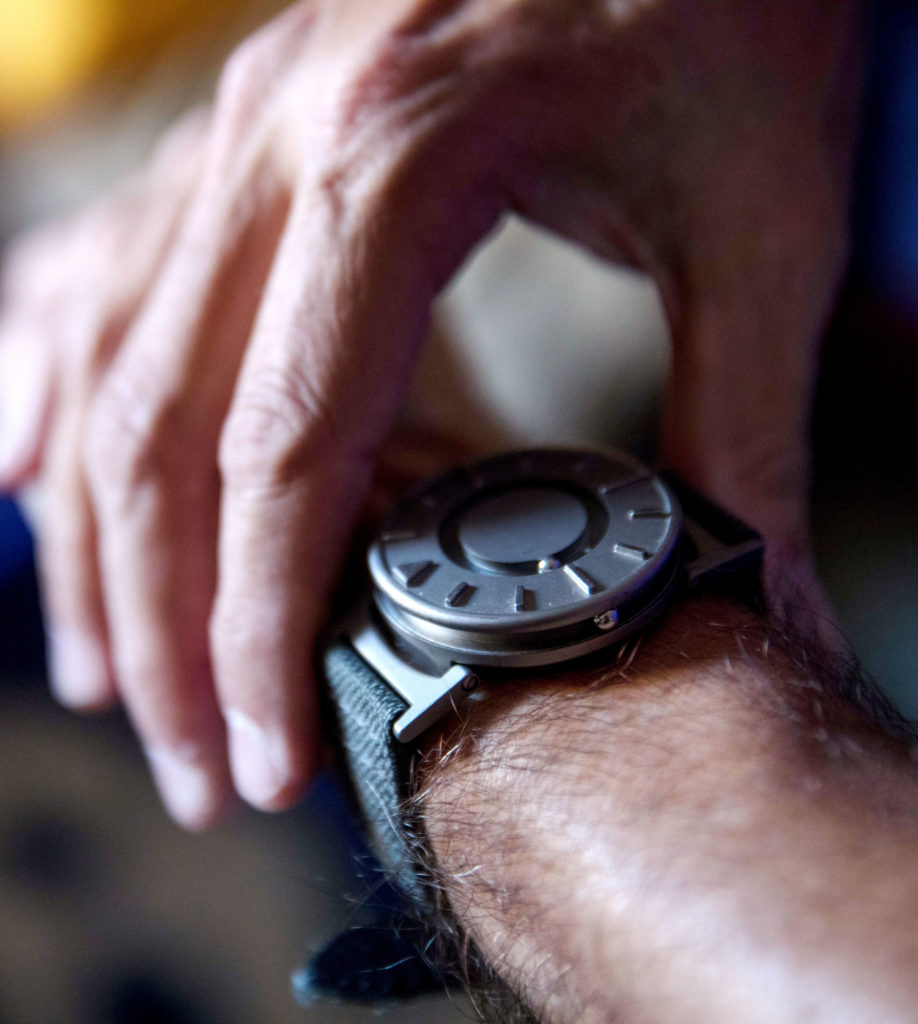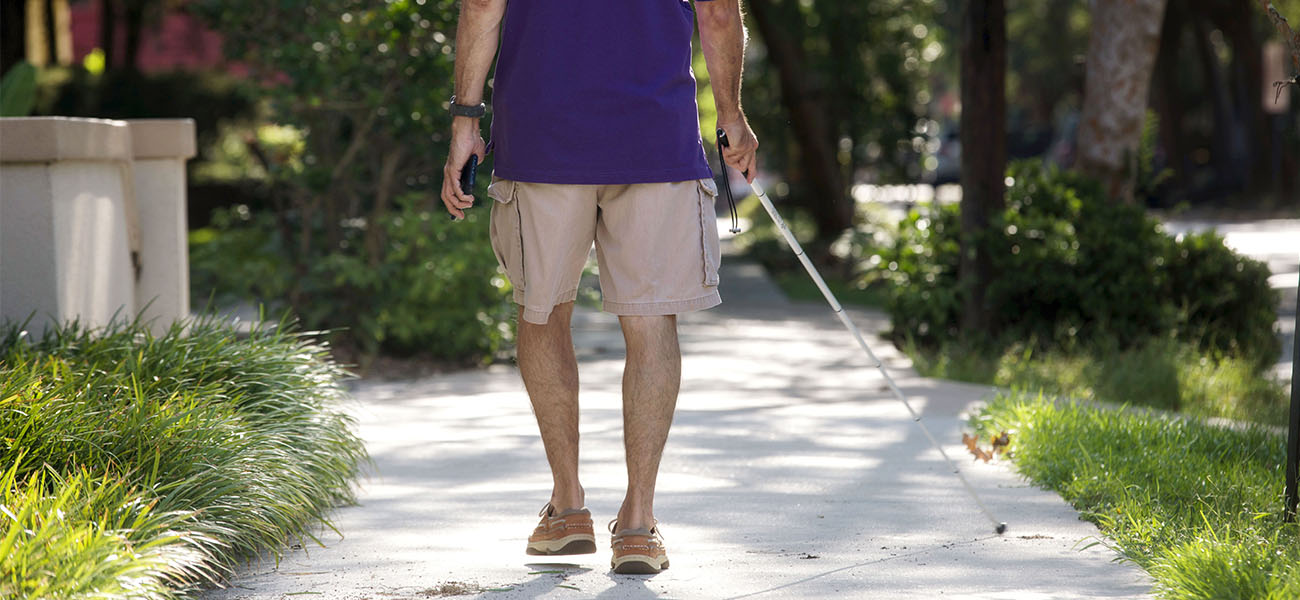
Sight unseen
Spending a morning with a blind Baton Rougean as he starts his workday—with the help of modern tech
Phil Templet lives among some of the brightest colors of the city. The front door of his Spanish Town apartment bears a bright pink flamingo emblazoned with his name, and his morning walk takes him past blue and yellow houses lined with overgrown greenery. Templet can’t see any of it, but he can feel it.
The 54-year-old was born with glaucoma, and though he had partial sight for most of his life, he went completely blind at age 40. Doctors removed his eyes in 2005 and 2007, so he wears two prosthetics now. He can’t see so much as a shadow or shape. But he remembers what things look like, and he has clear images of everyone he talks to conjured up in his mind.
“There was this one guy, Brent,” Templet explains with a laugh. “Pale guy, red hair. But for some reason I pictured him as Korean. I swore it. Until I said to someone, ‘You know, Brent. That Korean guy.’ And they told me.”
|
|
That’s his sense of humor. He doesn’t see his blindness as a hindrance or as a tragedy that happened to him. It’s just part of his life—and an interesting topic of conversation.
“See that sign?” Phil says conversationally, pointing to a street sign on Third Street as he makes his way down the uneven sidewalk with a cane. “Smoked my head on it when they first put it up. And then that week, I went to the Saints game, hit the other side of my head on a window A/C unit on Burgundy Street. You should have seen it!”
He’s a fixture in his neighborhood. At the cafe tables outside Spanish Town Market and over the hot food line at Matherne’s Market on Third Street, people shout his name all morning. They’re excited to hear how he’s doing this week. When his friends hear that his daily life is being featured in a magazine, they joke that 225 should show him on a barstool at one of the local dives, since he’s always out sharing a beer with his neighbors.
Blind people, he explains, are often underestimated by their communities. But they have jobs. They contribute to the economy. They build friendships with sighted and blind people alike. And with the help of modern tech, they’re now able to do more than ever.
“For me, being blind is no big deal,” Templet says. “I have to hear the ugly, but at least I don’t have to see it.”
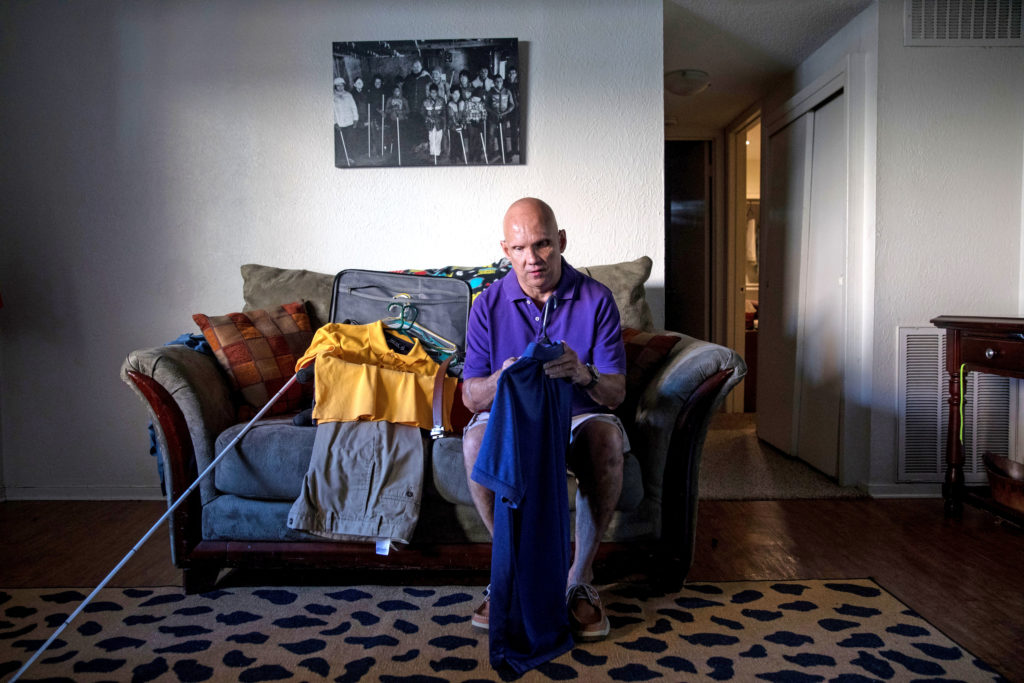
He doesn’t see his blindness as a hindrance or as a tragedy that happened to him. It’s just part of his life.
.
Assistive technology plays a major part in much of Templet’s day. At home, he packs for a week at his teaching job in Lafayette using a color identifier, which announces “intense red” or “dark gray” as he holds it up to shirts and slacks in his closet. With a device called a PenFriend, he records descriptions of products like medications, and those recordings play back when he points the device to coded labels attached to each product.
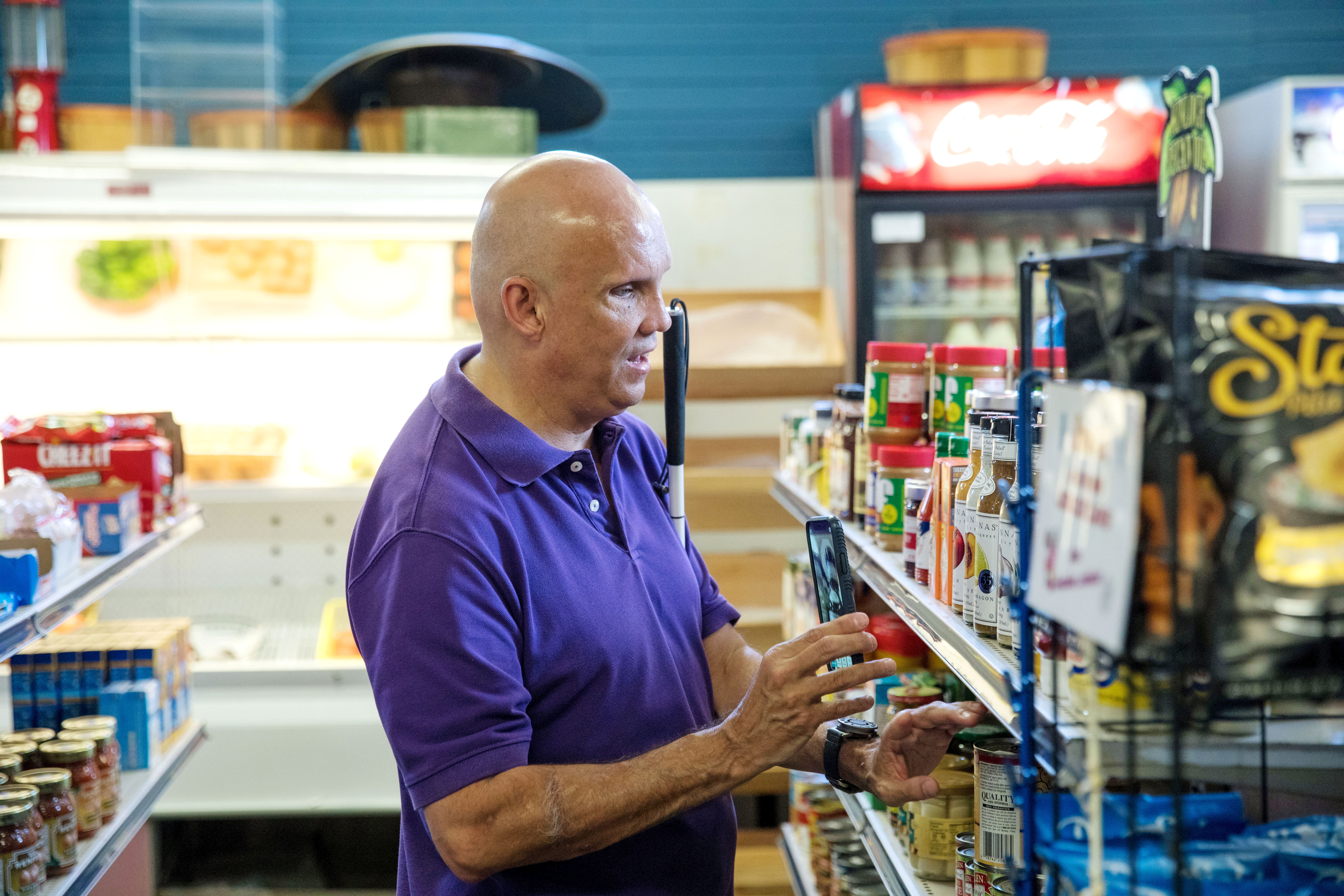
Down the block at Spanish Town Market, Templet often stops in for a sandwich. He uses an iPhone app called Seeing AI that can read labels on grocery items aloud to him and also save a photo of a person’s face and recognize them for him.
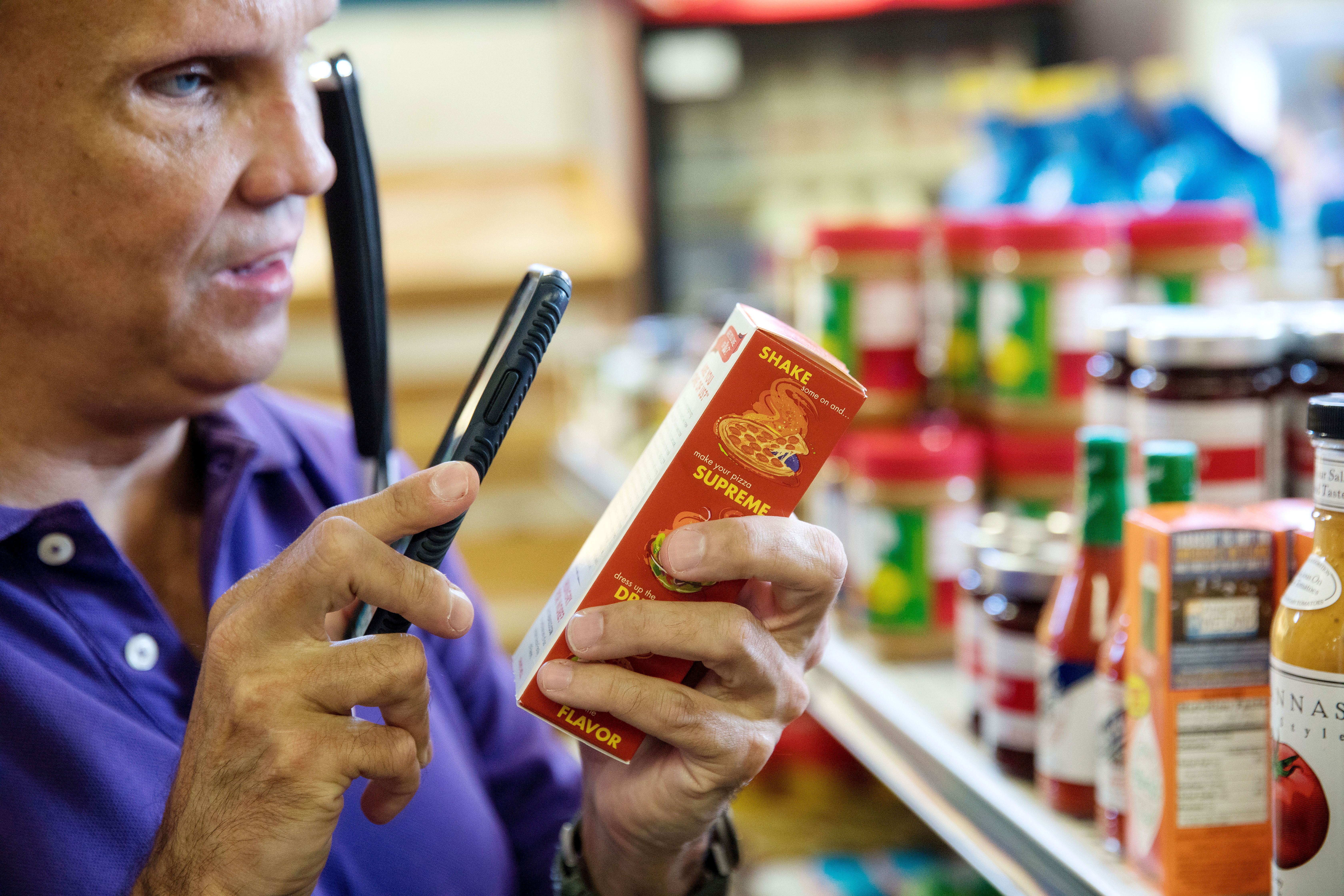
Another app, Be My Eyes, connects him with a sighted volunteer who can see through Templet’s camera to give him directions.
Much of Templet’s apartment is outfitted to help him, with voice-controlled Amazon Echo devices, cordless phone charging pads and a smart electronic lock that automatically unlocks his front door when he’s within 10 feet of it. He also wears a metal watch (above) with a raised, three-dimensional face he can read by touch. He jokes that it’s convenient for when you want to check how much time you have left at work without your boss knowing.
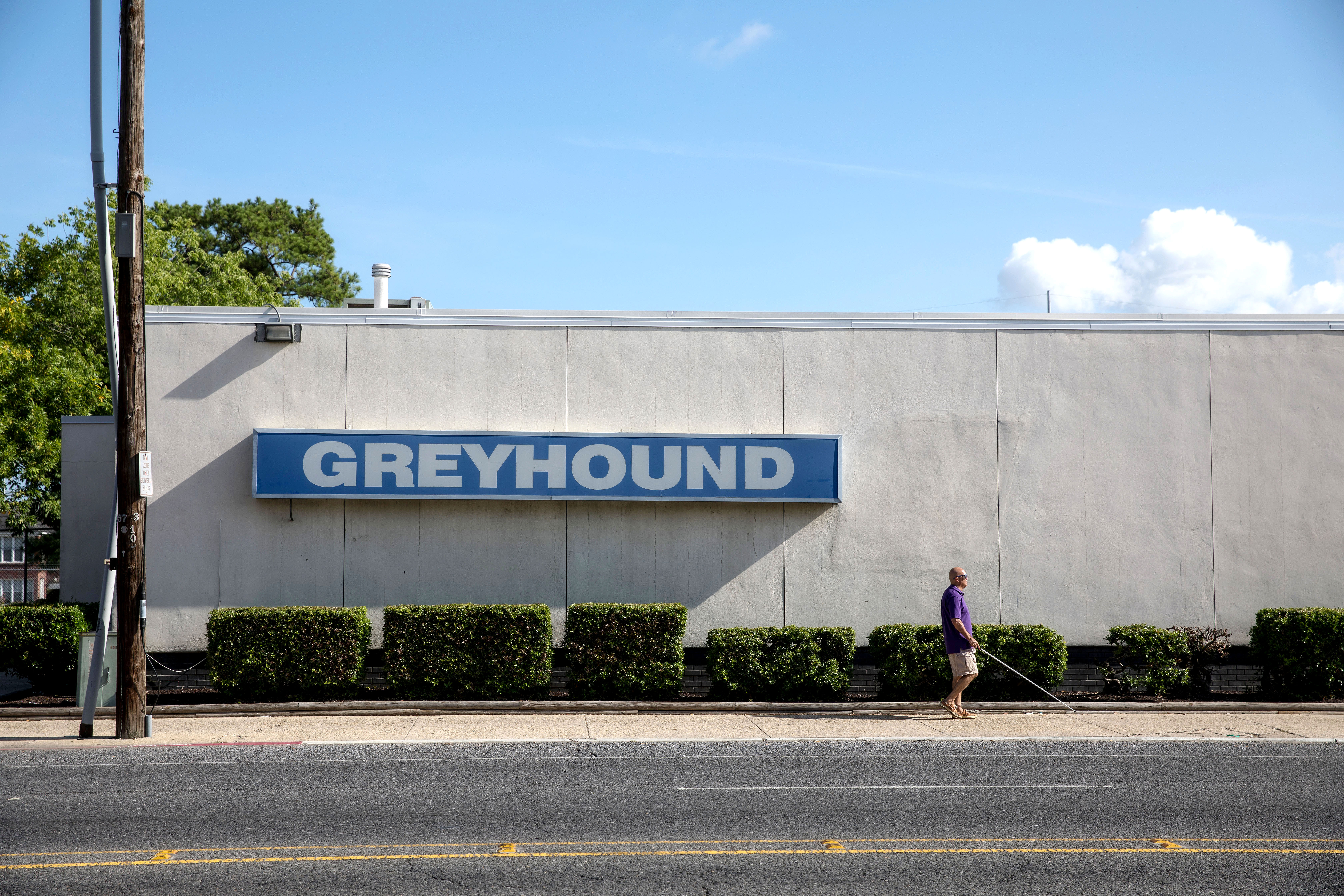
Templet spends his weekdays in Lafayette working full-time at Affiliated Blind of Louisiana, a training center where he teaches assistive technology to deaf and blind people. He typically gets up at 4:30 a.m. on Monday mornings to pack up before taking an Uber to the Greyhound station for his bus to Lafayette. He says ride sharing apps like Uber have especially transformed the way blind people are able to move around their communities.
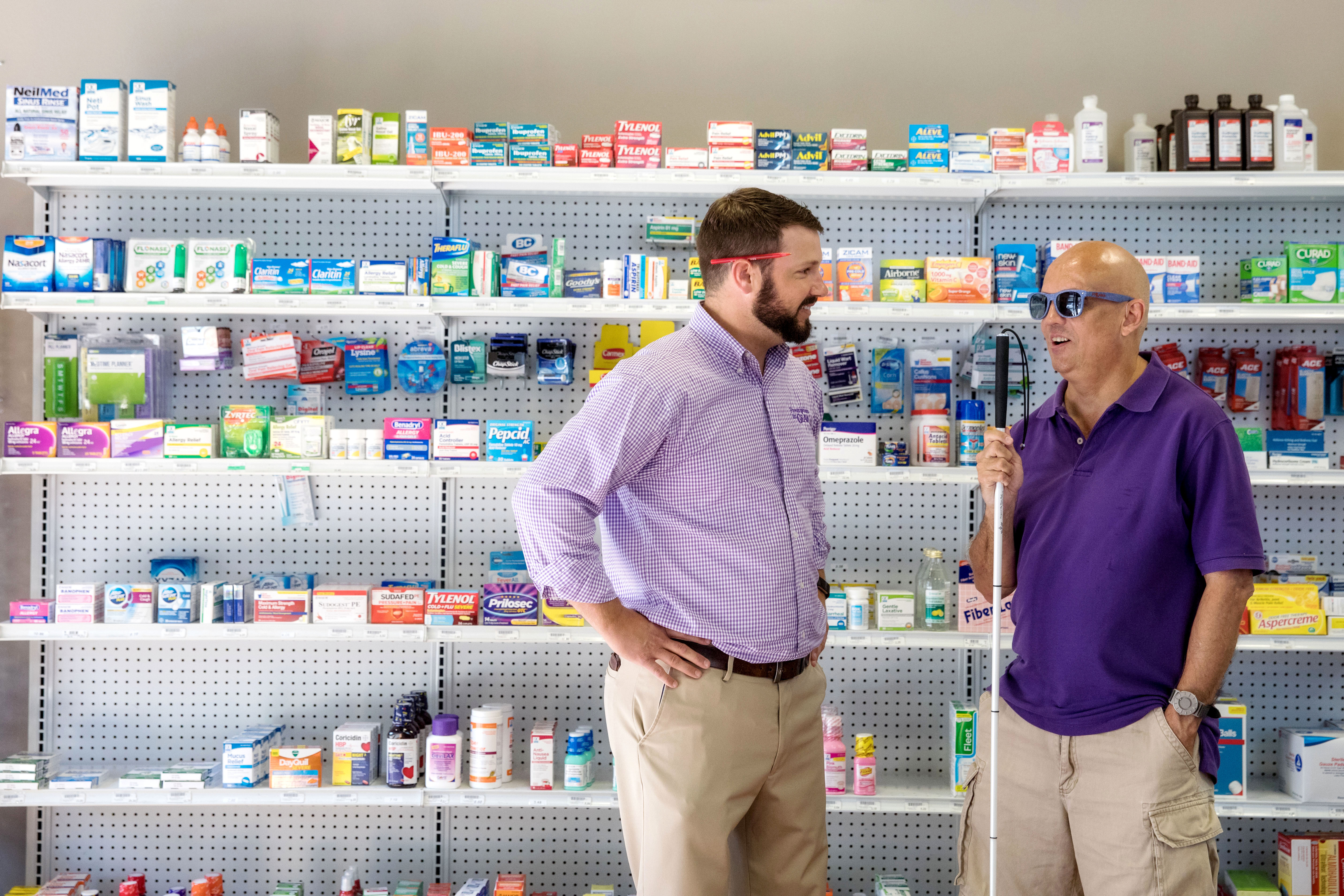
Templet opts to use small, locally owned pharmacy Prescriptions to Geaux downtown, where his familiarity with the staff makes it easier to get the help he needs.

With all his banking handled online, Templet uses Apple Pay for shopping whenever he can, like at the downtown Matherne’s Market. It’s faster than fumbling with a credit card, and a facial recognition component serves as a more accessible security measure than entering a PIN.
This article was originally published in the October 2018 issue of 225 Magazine.
|
|
|
